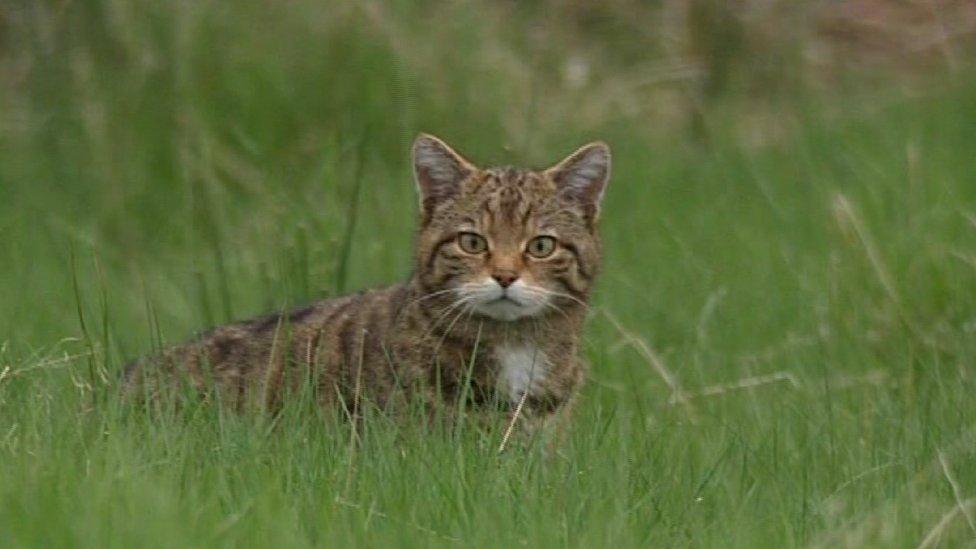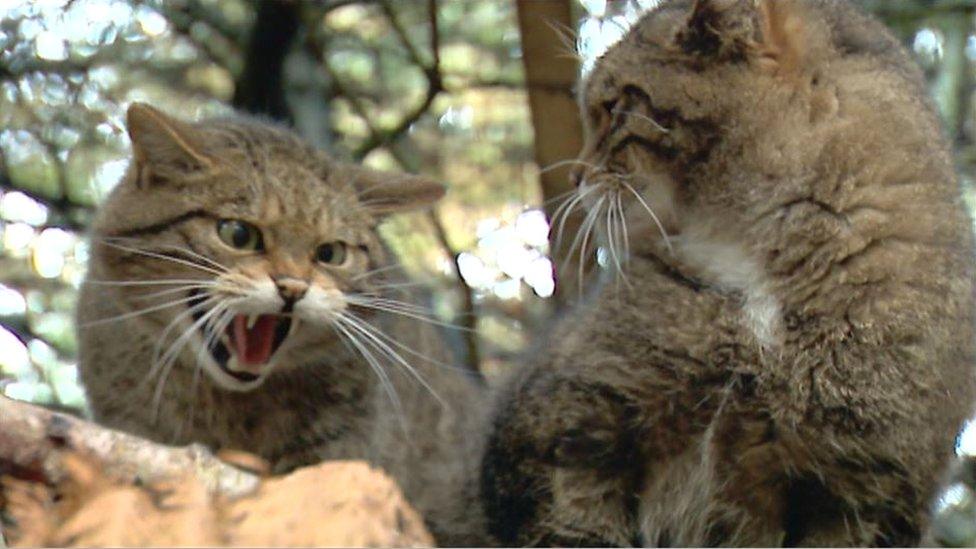'Feline HIV' threat to Scottish wildcats
- Published
The feline form of the HIV virus is threatening Scotland's rare and endangered wildcats
Scotland's rare and endangered wildcats are facing a new threat - the feline form of HIV.
Scientists said feline immunodeficiency virus (FIV) had been confirmed for the first time in one of the last remaining strongholds for the species.
Morvern in the West Highlands is one of the priority areas for conservation.
Experts at Edinburgh University's Royal Dick School of Veterinary Studies and National Museums Scotland are warning deadly FIV has now reached Morvern.
The Scottish wildcat is on the edge of extinction.
Over the centuries, deforestation and historical persecution have taken their toll.

Wildcat are on the edge of extinction
But it is now hybridisation which represents the biggest threat to wildcats, due to cross-breeding with domestic and feral cats.
Six wildcat priority areas were identified in Scotland, in an effort to focus conservation efforts on parts of the country where the species has the best chance of survival.
But now FIV has reached one of those areas.
There is no vaccine. FIV is transmitted when adult male cats fight and the experts say neutering will be key to tackling the disease.
They have recently identified two cases of the virus in cats with mixed domestic and wildcat ancestry.
One of those cases involved a long-haired tabby cat found dead in a barn in Morvern.

Prof Meredith said domestic cats in wildcat areas should be neutered
Prof Anna Meredith of the Royal Dick Vet School said: "This find confirms that pet owners must be encouraged to vaccinate and neuter their cats, particularly if they live in a wildcat priority area.
"Cats are susceptible to other illnesses, such as cat flu and feline leukaemia virus, and these can be common in feral cats too.
"That means the importance of vaccinating and neutering cats is at an all-time high as we continue to work together to save our Scottish wildcat."
Efforts to trap, neuter, and vaccinate feral cats in wildcat priority areas are being stepped up.
Conservationists are also working to gather more detailed data on the populations of wildcats, hybrids, and feral cats, in the priority areas.
Dr Roo Campbell, of the Scottish Wildcat Action project, said: "Communities across Scotland can play a huge part in helping us to save the wildcat by contacting their local project officer or reporting sightings through our website.
"We have less than five years to make a big impact as part of our Scotland wide project, but we can make a huge difference not only by drawing on the expertise of our partners, but also by working with local people."
Project workers in Morvern have the backing of local landowners and gamekeepers.
Hugh Raven, of the Ardtornish Estate, told BBC Scotland News: "They're an iconic species and they cause great enthusiasm when you do tell people that they can be found here.

Morvern is one of the priority areas for wildcats
"But they are very elusive.
"I have lived here full-time for nearly 20 years and I think I have seen two cats in that time that I can confidently say were wildcats."
For most people, the only chance of seeing Scottish wildcats up close will be at the Highland Wildlife Park near Aviemore.
There are serious questions about the species' ability to survive in what is left of its natural habitat.
But the conservationists insist they will do everything in their power to ensure Scotland's wildcats remain part of our natural heritage.
- Published21 September 2015
